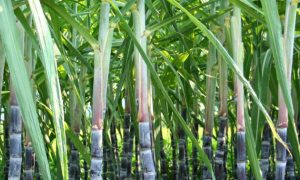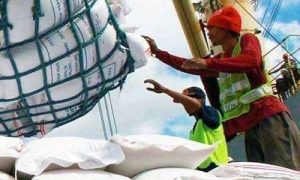Multiple benefits of cultivating wheat in rice residue retained fields: Experts

Experts highlight multiple benefits of cultivating wheat in rice residue-retained fields, emphasizing improved soil health and crop productivity. Incorporating rice straw into the soil enhances organic matter, nutrient replenishment, and water retention, benefiting subsequent wheat crops. This practice, aided by tools like the Happy Seeder, reduces the harmful impact of straw burning, which contributes to air pollution and nutrient loss.
In the state’s annual crop cycle, wheat plays a vital role after the rice harvest. With the mechanisation of farming, the management of these crops is also carried out using modern combines, resulting in millions of tons of crop residue.
In the state’s annual crop cycle, wheat plays a vital role after the rice harvest. With the mechanisation of farming, the management of these crops is also carried out using modern combines, resulting in millions of tons of crop residue being produced annually.
Recommendations for wheat sowing using Happy, Smart and Super Seeder
- In fields where wheat is to be sown using Happy, Smart or Super Seeder, ensure that the last irrigation for the rice field is done in a way that leaves the soil adequately moist
- The seeding depth for wheat using the Happy Seeder or Smart Seeder should be maintained at 1.5 to 2.0 inches
- For sowing wheat using the Happy Seeder, an additional 5 kg per acre of seed should be used compared to the standard seeding rate for wheat varieties except PBW 869
- At the time of sowing, the recommended dose of DAP for Happy Seeder should be maintained at 65 kg per acre. Additionally, urea fertilizer should be applied in two equal parts
While around 90 per cent of wheat straw is converted into fodder for animals, the management of rice straw still remains a significant challenge for us today. By incorporating this straw into the soil, it contributes to the replenishment of various essential nutrients. The organic matter in the soil increases, which in turn enhances the growth of the subsequent crops.
Despite state government’s efforts in educating the farmers, a significant amount of the total rice straw produced annually in the state is being burnt by the farmers in three-four weeks during October-November. This leads to air pollution, respiratory problems, increase in the fog incidences and nutrient loss. This practice impacts human and animal health both medically and by traumatic road accidents due to restricted visibility.
Burning of rice straw causes gaseous emission of 70 per cent CO2, 7 per cent CO, 0.66 per cent CH4 and 2.09 per cent N2O.The straw serves as food for various soil microorganisms. These microorganisms gradually decompose the straw into compost, improving the fertility of the soil and enhancing its physical properties. This process also increases the soil’s ability to retain water, said Jayesh Singh from the Department of Plant Breeding and Genetics, PAU.
“Soil’s health can be protected by laying a layer of straw on the soil surface and allowing the microorganisms to break it down. In months like December and January, this cover assists in maintaining a suitable temperature for the crop,” he said.
Source Link : https://www.tribuneindia.com/news/ludhiana/multiple-benefits-of-cultivating-wheat-in-rice-residue-retained-fields-experts/














